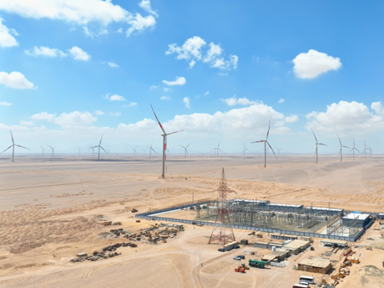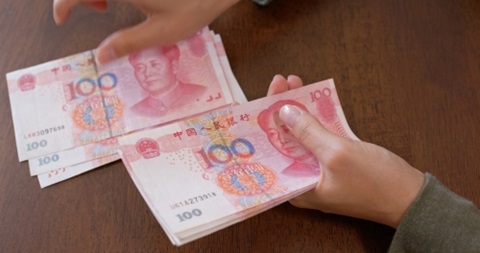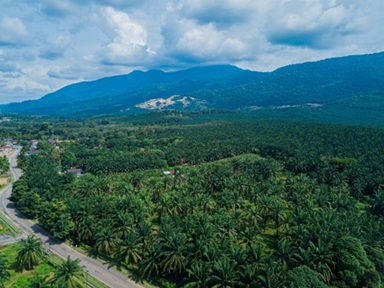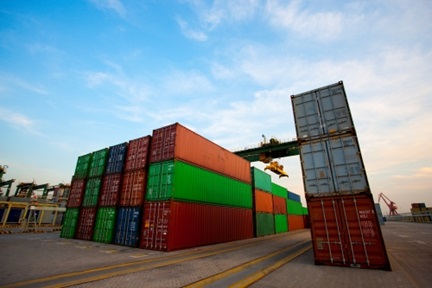Making the most of natural resources
Africa is rich in minerals, metals, oil and gas. At long last it is starting to take advantage of it.
by Johan Burger

MINING POTENTIAL IN NORTHERN CAPE PROVINCE OF SOUTH AFRICA
Errol Smart, a South African with extensive experience in the Australian minerals development sector, believes South Africa’s economic recovery plan needs vigour, especially in the Northern Cape province. He views the Northern Cape’s immense potential as ripe for exploitation. His organisation’s 3,000 km2 portfolio of mining and prospecting rights includes 23 commodities of interest. They include uranium, nickel, cobalt, platinum group metals and gold, plus many base metals. These mineral opportunities make the area globally unique.
Certain factors need to be in place to exploit the potential of this rich region. These include political certainty, regulatory liberalisation, and an efficient and corruption-free online minerals rights registration system. Should these factors appear together with tax incentives for the sector, they will transform the Northern Cape's rural landscapes, where investment and employment are most needed.
Glen McGavigan, executive head of Technical and Projects at Kumba Iron Ore, echoed Smart’s views on the Northern Cape's mineral potential. He believes this potential has barely been scratched and that the region was under-explored.
One start-up project that can be attributed to new technology is the US$400 million Gamsberg zinc project by Vedanta Resources in the Northern Cape. According to Laxman Shekhawat, business head of Vedanta Zinc International, Vedanta is planning further expansion of Gamsberg and a new zinc smelter, both of which will support the South African government’s aspiration of industrial beneficiation. However, the go-ahead for the project is dependent on transport capacity improvements from Transnet. In addition to the bottleneck at Transnet, Eskom’s compound tariff increases of more than 50% over three years also limit developments in the sector. Vedanta intends to build a steel-making hub in the Northern Cape.”
Smart intends to collaborate with Vedanta to extract base metals in the region, with African Rainbow Minerals to develop its smelting technology, and with Kumba to enable cooperation with SLPs (social and labour plans) training.[1]
POINT OF INTEREST
- South Africa’s Northern Cape Province is a scarcely populated semi-arid region. Employment is a challenge, and wages are low. It is a mystery why the South African Ministry of Mineral Resources and Energy are dragging their feet to exploit the mineral resources that can transform an otherwise poor province. Agriculture is currently a significant employer in the province, but due to severe and periodic droughts, farmworkers frequently turn towards the larger towns in the province. Should the mining potential in this area be exploited, it would provide the youth and the general labour force with an alternative. The reality is that the Ministry has struggled for several years to run a tight ship. The resulting uncertainty led to companies either hesitating to invest or to leave the country. AngloGold Ashanti is such a company that has sold off its assets in South Africa. Others, like Sibanye-Stillwater, has made it clear via its CEO, Neal Froneman, that its investment in South Africa was despite the South African government. He was also very critical about the government dragging its feet.
BOOSTING SOUTH AFRICA’S CHROME PRODUCTION
South Africa’s chrome industry is not in a healthy space. Over the past decade, its ferrochrome production rose from 3.2 million tons to 3.6 million tons in 2019. Despite this modest growth in aggregate terms, South Africa’s share of global ferrochrome production fell from 47% of the total in 2010 to 25% in 2019. In the past two years, nearly 40% of South Africa’s ferrochrome production was either shut down or mothballed.
According to the Minerals Council South Africa, the country’s entire chrome value chain should be supported through the use of several measures that include developmental pricing for ferroalloy producers, a review of the subsidy to intensive electricity users, the promotion of self-generation, port efficiency improvements and steps to switch chrome transport from road to rail.
The South African Government in October 2020 proposed an export tax on chrome ore to protect the production of higher value ferrochrome. Supporters of this measure argued that given South Africa’s dominance in chrome production, it is consistent with similar steps by countries such as China to protect domestic production. In contrast, chrome ore exporters criticised the move, claiming the cost of electricity is the primary factor hurting the alloys sector.
The Minerals Council indicated that as electricity prices escalated more than 500% in the last decade, the industry needed to take a longer-term view of electricity pricing to enable strategic planning. It also called for reviewing the current cross-subsidy for electricity-intensive users and considering phasing this policy out. Also, the Council called for a potential adjustment of the winter peak demand tariff.[2]
POINT OF INTEREST
- The inaction at the Ministry of Mineral Affairs and Energy is also evident in the South African chrome production sub-sector. It seems it is either the lack of action or the wrong type of action that limits progress in the sub-sector and constraining its competitiveness against global competitors. As the saying goes, “with such friends, you do not need enemies.” One factor that reportedly plays a role is the ruling ANC's policy of cadre deployment, where people with party influence get top jobs. Competence is seemingly not a significant factor. Whenever the Ministry had a competent minister, he was soon replaced when he fell out of favour with the president – to be fair, this happened during the height of the period now referred to as state capture.
USE OF BATTERY FUELS DEMAND FOR MINERALS
The dominant position of gold production in West Africa, currently meeting more than 8% of global supply, led to focusing most of the mining infrastructure in the region on the subsector. The metal now attracts the most investments and projects in the sector. This bias makes it difficult for mining projects focusing on other materials to generate attention and receive adequate funding.
A panel at the Africa Mining Forum 2020 discussed the developing battery market and how West Africa could profit from this trend. According to PwC representative George Ahrin, West Africa cannot depend only on one resource, and it is imperative to diversify economic activities. However, the panel identified the battery market as a lucrative opportunity for expansion outside the gold sector, not only for Africa but especially for West Africa.
According to Ahrin, in 2019, the battery metal market was valued at US$14.8 billion. It may grow at 2.4% per year over the next few years, driven by continued emphasis on emission reduction and the shift to electric vehicles. George Heppel from CRU stated that while economic turmoil, high consumer debt, potential austerity plans and risk of unemployment in the wake of the Covid-19 pandemic could have stalled this growth dramatically, countries and companies had renewed their climate change aspirations. Electrical transportation is central to these aspirations, which means that batteries and their component elements will be in high demand. Heppel suggested that cobalt's global market could increase 2.4 times, and nickel and lithium 3.3 times, respectively.
Africa, and especially West African countries, have an abundance of mineral resources. They can potentially tap this emerging market and meet growing demand. To bring this about, investment and potential financiers must ensure fiscal stability. A useful legal framework and strong government support are important considerations.[3]
POINT OF INTEREST
- Any initiative to reduce Africa’s dependence on a single commodity is to be lauded, more so if such an endeavour is climate-friendly as well. Focusing on projects that could tap the battery market, both in Africa and globally, is an example of such projects. Africa also currently imports many batteries to supply its renewable energy projects. The ability to produce batteries locally will create many advantages, such as in employment, import substitution and export revenue generation. It will also reduce the vulnerability of being dependent on a single commodity or raw commodities. With electric vehicles growing in demand in Africa and globally and the growing demand for renewable energy, producing batteries for the continent should be actively supported.
BOTSWANA EAGER TO REDUCE DEPENDENCE ON ITS DIAMOND SECTOR
Botswana is over-reliant on its diamond revenues. Botswana's President Mokgweetsi Masisi invited investors to tap into opportunities in its coal, gold and base metals industries to reduce this dependence. The Covid-19 hammering of one of the country’s most lucrative sectors exacerbated the need for this diversification. The pandemic led to a “drop in global diamond output by around 20% last year, leading to slashed prices, shuttered mines and widespread job losses due to supply-chain disruptions in the diamond industry.” Uncertainty remains regarding the renewal of a 10-year sales agreement with De Beers after the current deal expired at the end of 2020. De Beers provides Botswana with around 67% of its foreign exchange and 20% of its GDP. The global slump subsequently sent the country into an 8.9% contraction in 2020.
President Masisi identified other opportunities in copper, nickel, silver, soda ash, salt, coal and gold that could help Botswana move away from its overreliance on diamonds. Rare earth metals and battery metals are abundant in Botswana.
Botswana adopted several measures to facilitate this diversification strategy. These include a roadmap to exploit approximately 212 billion tons of coal, a review of Botswana’s legal frameworks in mines, and a study to encourage investment in limestone deposits and cement. Supporting measures include developing a multi-commodity exchange to provide investors with an easy platform for trade in various commodities beyond minerals and the digitalization of geological information for domestic and international investors to encourage mineral exploration.[4]
The 212 billion tons of Botswana’s coal reserves are mostly unexploited. The coal road map to which President Masisi referred presents eight potential options to increase the contribution of coal to its economy. These options are classified based on the overall effectiveness, with coal exports, power exports and domestic power supply highly prioritised. According to President Masisi, the roadmap promotes sustainable coal mining through the use of clean technologies, which mitigate the effects of climate change. Botswana is collaborating closely with its neighbours to put in place the necessary infrastructure to facilitate coal exports.[5]
POINT OF INTEREST
- Botswana’s focus on reducing its dependence on the diamond sector as an employer and revenue generator is another example of the need to embrace diversification. This country has strong tourism potential, in addition to the broad range of minerals to which President Masisi referred. It is also well run, economically and otherwise, with low crime levels. It has the challenge of being landlocked but seems to be managing this well. Not only can it reach the sea via South Africa, but there have also been reports indicating the development of railway access via Namibia and even Mozambique. Botswana does not want to be limited to access via South Africa.
ETHIOPIA’S RICH MINERAL RESOURCES
Ethiopia has a rich reservoir of minerals with the potential to transform the lives of Ethiopians and create more jobs. Until now, a lack of funding, technology and experience has stymied the growth of the sector. However, if appropriately managed, the sector can attract much-needed foreign currency and create massive job opportunities for local communities.
While Ethiopia is exporting several types of gemstones, such as opal, emerald, and sapphires, the country is not benefitting optimally as the sector does not have strength in cutting and polishing. It was recommended that the government support this capability and encourage exporters to sell only cut and polished stones directly to the global markets.
Lithium has several uses in the industry. The recent rise in demand for electric vehicles increased the demand for lithium batteries. Ethiopia has an estimated 250,000 tons of proven reserves of lithium oxide and should therefore be ready to exploit this tremendous opportunity.
The country’s potash reserve is one of the highest in the world. Prospecting for iron, copper, and base metals is also in progress in many of its regions. Ethiopia has an estimated reserve of iron ore deposit of more than 70 million tons. The local demand for iron is expected to continue due to the infrastructure boom in the country. The government is also working with international mining companies to explore and develop iron ore.
The country has a variety of industrial minerals such as limestone, clays, sand, gravel, diatomite, kaolin, bentonite, silica, barite, gypsum, and talc. These are essential raw materials for cement, ceramics, paints, glass, chemical, and paper industries. Hence, the development and expansion of industrial minerals are critical.[6]
POINTS OF INTEREST
- Ethiopia finds itself in a similar position to Botswana as far as diversity and richness of minerals and being landlocked is concerned. It is also a country with a much larger population (112 million), with a relatively low per capita GDP of US$602 (2019 figure). A minerals policy aimed to exploit its mineral potential efficiently and help raise its GDP, in addition to growing the employment base (2018 unemployment is at 19.2%). The country needs to deal with the Tigray state's internal unrest, as this is not conducive for the long-term foreign investment required for the mining sector.
Additional Readings
Anon. 2021. Rebuilding the mining industry in Botswana. African Review. 3 February 2021. Available at https://www.africanreview.com/events/mining-indaba-2021/rebuilding-the-mining-industry-in-botswana. Accessed 13 February 2021.
Anon. 2020. Battery metals could be the new gold for West Africa. African Review. 23 November 2020. Available at https://www.africanreview.com/construction-a-mining/excavation/are-battery-metals-the-new-gold-for-west-africa. Accessed 13 February 2021.
Collins, T. 2021. Botswana courts investors amid diamond slump. African Business. 4 February 2021. Available at https://african.business/2021/02/trade-investment/botswana-courts-investors-to-mining-sector/?mc_cid=fd617485f8&mc_eid=512a079920. Accessed 13 February 2021.
McKay, D. 2020. Introduce “toolbox” of measures to save SA’s entire chrome value chain, says council. Miningmx. 27 October 2020. Available at https://www.miningmx.com/news/markets/44156-introduce-toolbox-of-measures-to-save-sas-entire-chrome-value-chain-says-council/. Accessed 13 February 2021.
McKay, D. 2020. SA’s under-explored Northern Cape “a dripping roast” if Govt would just open the door. Miningmx. 26 October 2020. Available at https://www.miningmx.com/news/markets/44140-under-explored-northern-cape-a-dripping-roast-if-govt-would-just-open-the-door/. Accessed 13 February 2021.
Mulat, A. 2021. Monetizing mining industry. The Ethiopian Herald. 8 January 2021. Available at https://www.press.et/english/?p=28125#. Accessed 13 February 2021.
References








